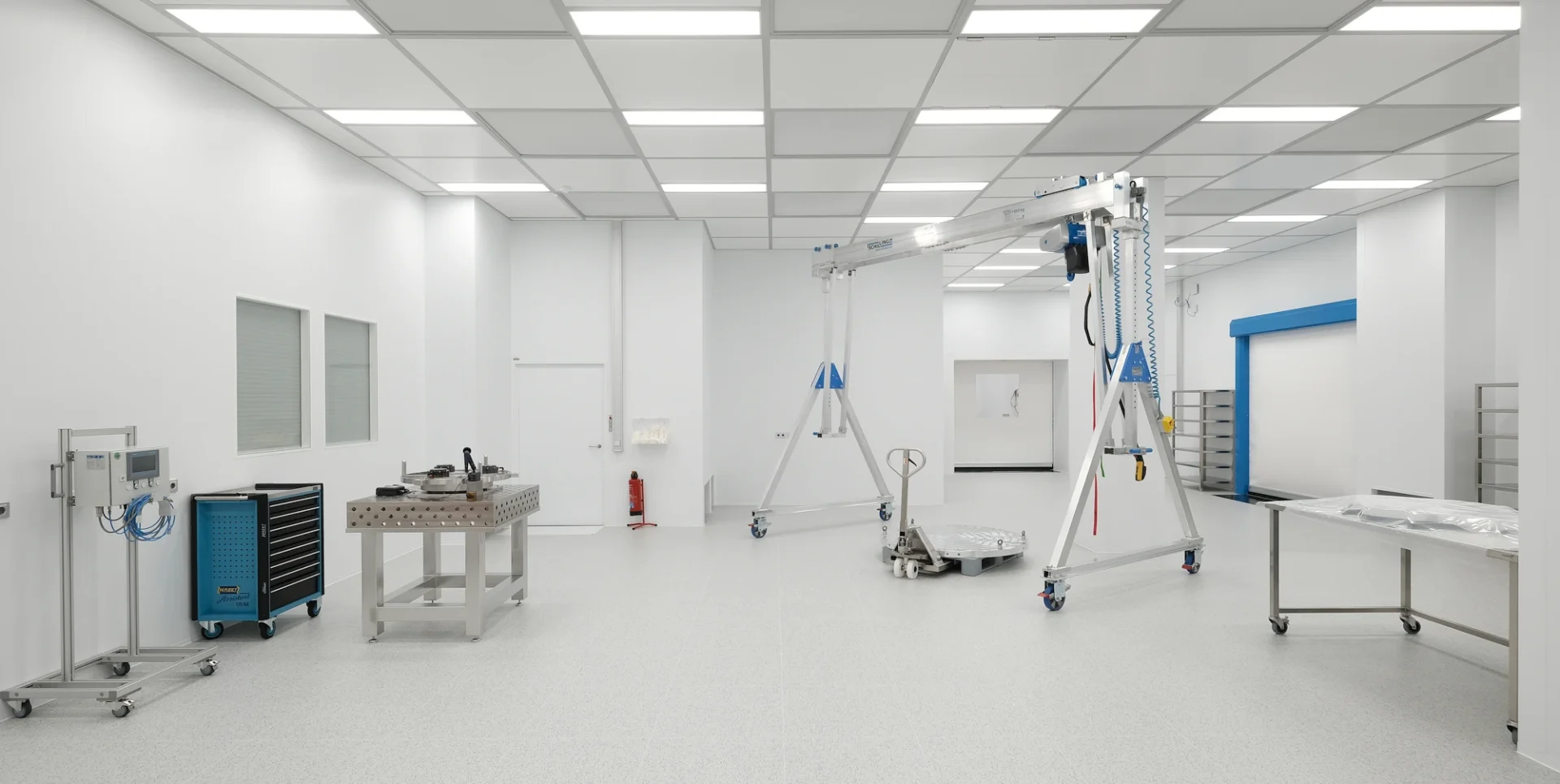Contract services - also in the clean room
We not only produce parts, assemblies, devices and systems, we also offer our customers a wide range of contract services: whether contract assembly in the cleanroom, contract cleaning in the cleanroom, dry cleaning with and without RGA in the cleanroom or contract packaging in the cleanroom - for ISO classes 5, 6, 7, 8, 9. Of course, you can also purchase services such as
assembly or parts cleaning without cleanroom suitability.
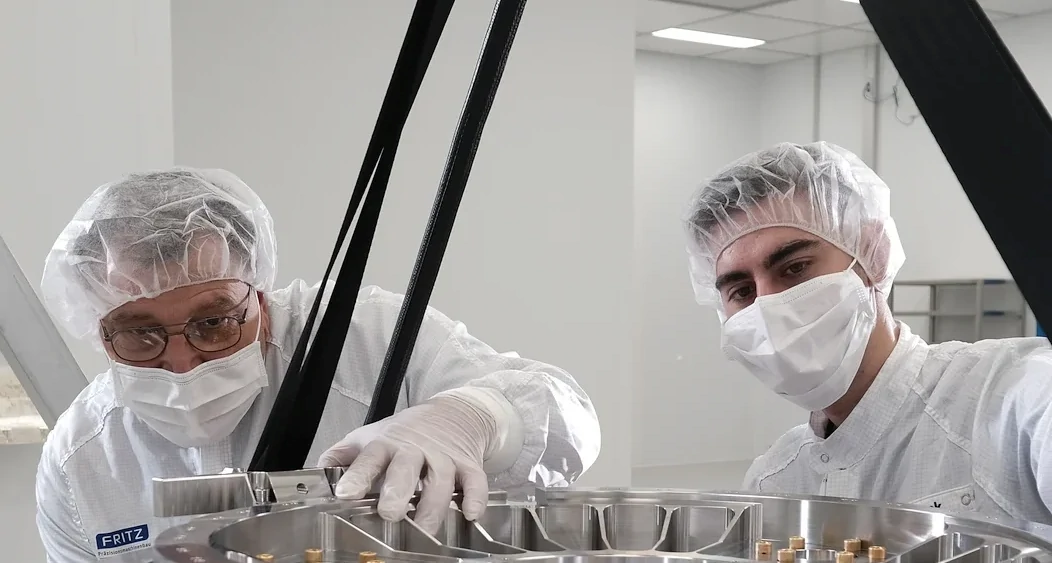
Contract assembly in the clean room
At the heart of our processes is the assembly in the cleanroom, for example of assemblies, devices or system parts including peripherals: whether wet chemical cleaning or dry cleaning, whether gray room, documentation of the cleanliness level or cleanroom-compatible packaging.
Contract cleaning in the cleanroom
We offer various services for contract cleaning in cleanrooms, e.g. ISO 7 to ISO 5 in accordance with DIN ISO 14644 / VDI 2083 ISO 9 (wet chemical cleaning), gray room, vacuum cleaning.
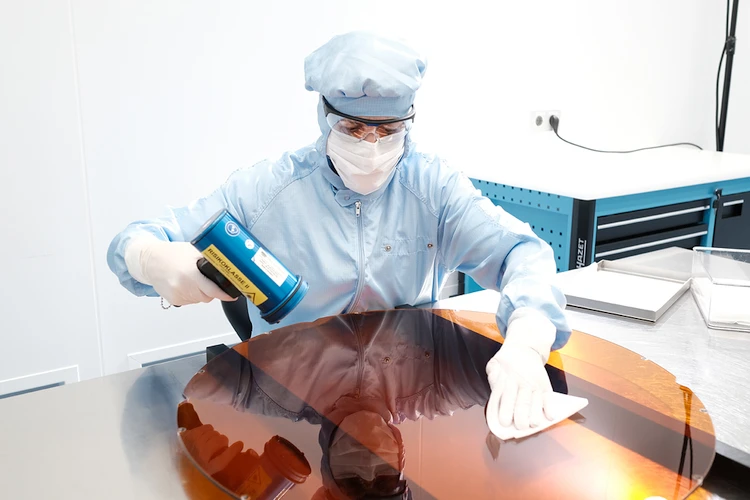
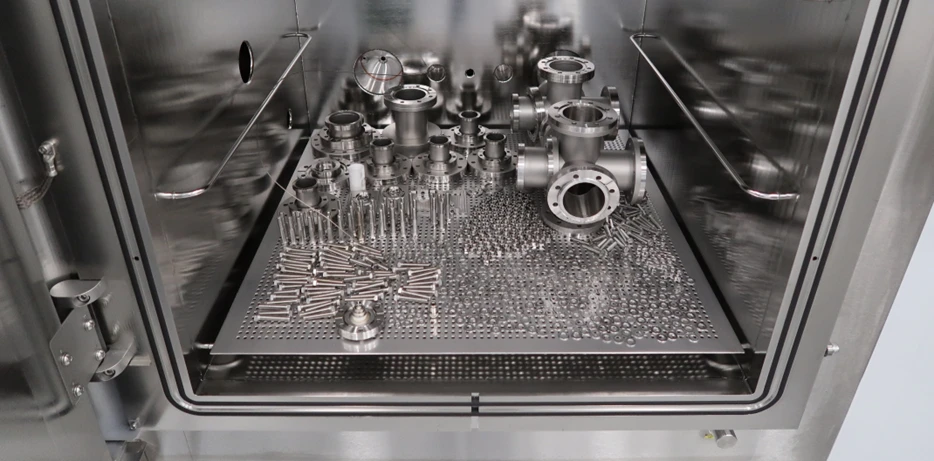
Dry cleaning in the clean room
Need dry cleaning? It is often necessary to dry complex components under vacuum after wet chemical cleaning, also to reduce the so-called outgassing rate. We offer vacuum-compatible cleaning with ultra-high vacuum dry cleaning systems, also with RGA on request.
Contract packaging in the clean room
We carry out contract packaging in the cleanroom exactly according to customer specifications: Cleanroom-compatible packaging can include vacuum packaging or double packaging in film, for example. You specify it - and we pack it!
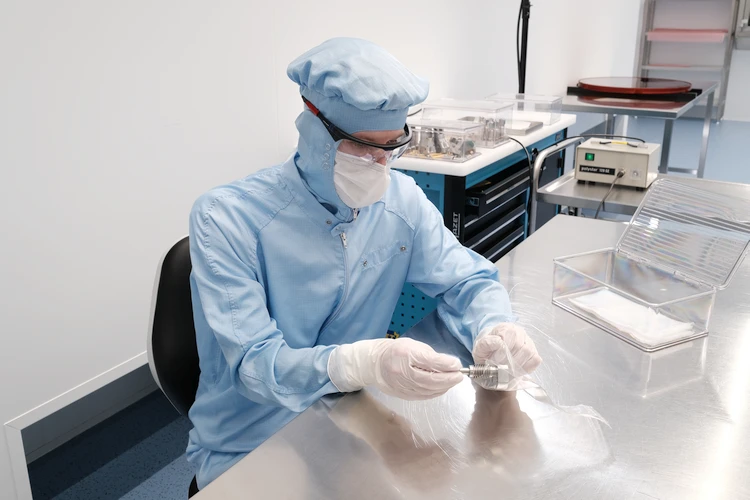
CLEANROOM SERVICES FOR LARGE AND SMALL COMPONENTS AND ASSEMBLIES
Until we decided to establish a large-scale cleanroom area, we gained initial and fundamental experience with small dimensions. Small assemblies, small cleanroom. Today, we use 600 square meters of cleanroom space with areas for wet-chemical cleaning ISO 9, ISO 7 to ISO 5 assembly areas. The exciting thing is that our experience grows with every challenge. As our experience grows, so do our tasks. Our customers appreciate this development and the experience we have gained from it. So our tasks are getting bigger and bigger.
Components and assemblies weighing up to 2 tons are part of everyday life today. Consisting of a variety of shapes and materials, assembly groups form complex structures, including machine components, production equipment or even entire production lines. This also means that the dimensions of components for cleanroom applications have grown. Today, with 600 square meters of cleanroom space, the area is not the limit. The airlocks determine the size. We are equipped for components that are 2,900 mm high, 2,700 mm wide and 7,000 mm long. Theoretically. After all, they still need to be able to be transported.
According to the motto "bold will hold", developers, designers and visionaries rely on powerful and stable components due to demanding physical processes. Only on the basis of these heavyweights can the challenges in the production of nanostructures be mastered. Everything has to fit. Even the quality of purity. And this is where the devil is in the detail, because these large components and assemblies have a lot of surfaces that need to be cleaned and brought up to ISO 7 or even ISO 5 cleanroom quality. Even if these giants can only be moved with gantry cranes and powerful high-lift industrial trucks suitable for cleanrooms, the issue is and remains the detail.
This leaves our teams with the meticulous task of inspecting and cleaning every square millimeter. And the whole thing is done in the dark with selective UV light. The fact that our cleanroom teams are proud of their work should be clear to anyone who has dealt with the details of a 2- or even 5-"ton monster". And the principle of "slow and precise is fast" applies here in particular - right through to packaging in cleanroom quality and carefully bedding the components in the huge transport boxes for safe shipping.
The fundamental issues for the large parts are: Handling, packaging and transportation during infeed and outfeed. The requirements for large objects must already be incorporated and taken into account in the design process. This is why holding points, attachment points and lashing points are elementary design features for heavyweights right from the start. Our customers value this knowledge base and the transfer of know-how with us, which enables us to create an ideal project process.
